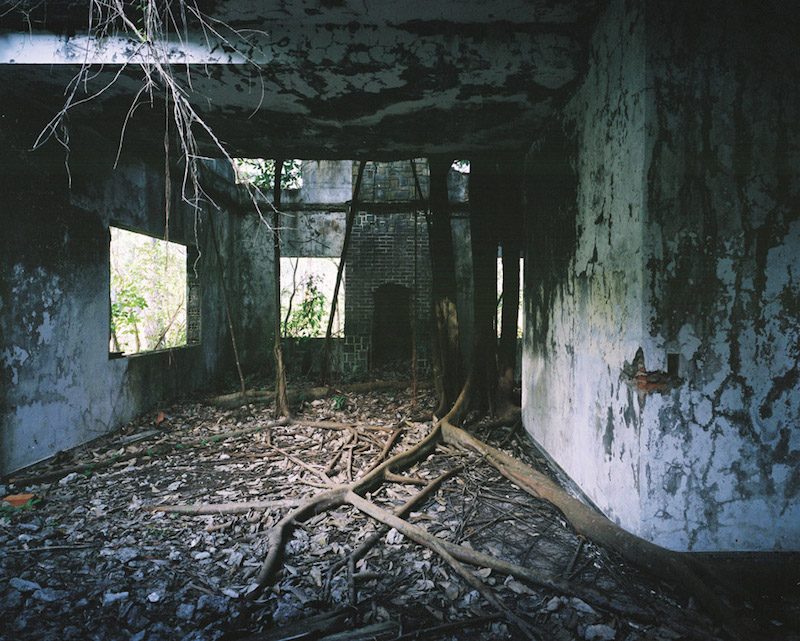For nearly five years, photographer Kim Hak has been traveling across Cambodia, seeking to record the country’s most beautiful landscapes before they are transformed by development or mass tourism.
The project has taken him in unexpected directions. Chance meetings two years ago resulted in a series, entitled “Alive,” which presented in words and images the objects of everyday life that people kept during the Khmer Rouge era, when simply owning them put them in jeopardy.

Mr. Hak’s latest series, “Tioulong, Echoes from a Golden Past,” which opened in Phnom Penh on Wednesday, came out of his off-road wanderings in the pine forest of Kirirom National Park in Kompong Speu province. There, on hills and in valleys all but inaccessible today, stood vestiges of homes abandoned to nature half a century ago.
Although little was left of them beyond a few walls and the occasional roof, the 35-year-old photographer was immediately struck by their beauty. The homes had large windows to let in natural light and allow breezes to blow through.
“They were very well designed…environmentally friendly,” he said. “I think the owners used architects.”
Mr. Hak soon found that no one has dared to build upon the fallen structures as people in the area believe they are inhabited by spirits and should not be disturbed.
Intrigued, he researched the area and discovered that the homes were built for middle-class public servants in the 1950s. The area was called Tioulongville, or Tioulong city, after high-ranking government official and diplomat Nhiek Tioulong, the father of Tioulong Saumura, whose husband is opposition leader Sam Rainsy. The town in the forest even had a hospital and city services, such as water and sewers, he said.
Tioulongville is mentioned in a 1960s romantic song that still is popular today. “I listened to ‘Samros Borey Tioulong,’ which was sung by Houy Meas in the ‘60s,” he said. “It created for me a relaxing and romantic moment in the deep pine forests.”
Mr. Hak also watched then-Prince Norodom Sihanouk’s 1969 movie “La Joie de Vivre,” titled “The Good Life” in English, which featured some of Tioulongville’s most luxurious villas. They would all be abandoned in the 1970s as the country became engulfed in war and conflicts.
Fascinated by how the remote site still was imbued with the mystique of that era, Mr. Hak returned to photograph the structures on film with a 6×7-format camera.
The result is a series of tranquil scenes in which an architectural feature—an arch here, a room there—has had its colors muted by the elements, becoming one with its setting over the decades.
The exhibition continues through November 7 at The Plantation hotel in Phnom Penh.